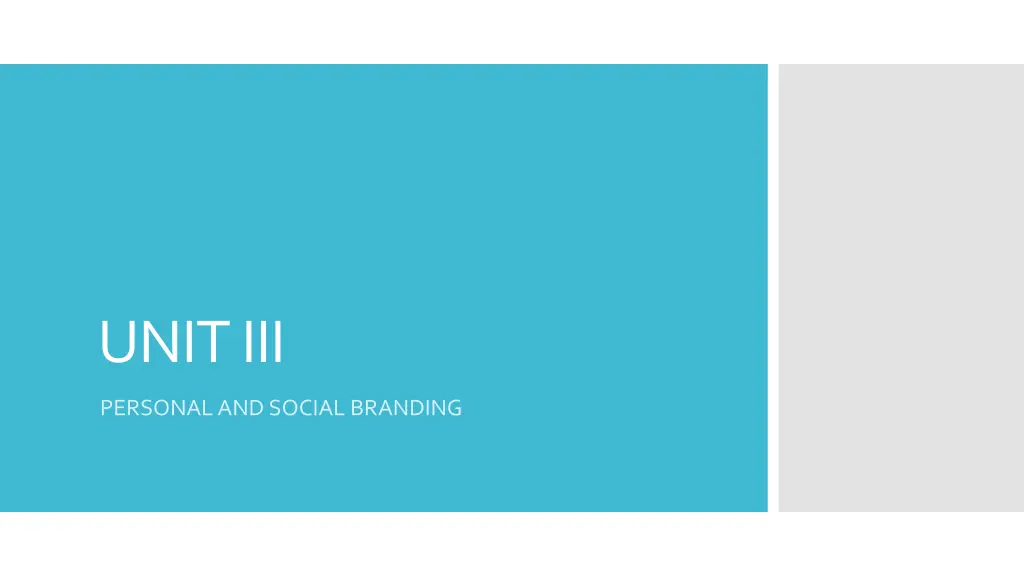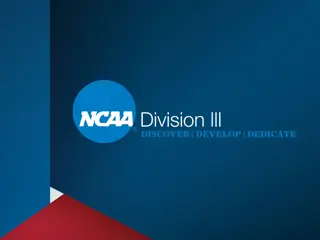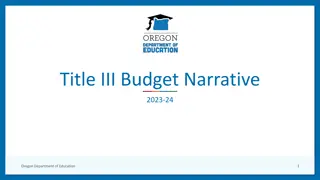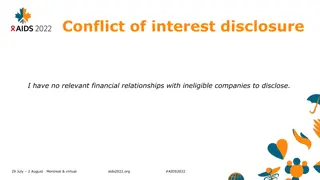
Understanding Personal and Social Branding for Success
Learn about personal and social branding, why it's important, and how to create and strengthen your own brand. Discover the significance of managing impressions, differentiation, and maximizing career potential through effective branding techniques.
Download Presentation

Please find below an Image/Link to download the presentation.
The content on the website is provided AS IS for your information and personal use only. It may not be sold, licensed, or shared on other websites without obtaining consent from the author. If you encounter any issues during the download, it is possible that the publisher has removed the file from their server.
You are allowed to download the files provided on this website for personal or commercial use, subject to the condition that they are used lawfully. All files are the property of their respective owners.
The content on the website is provided AS IS for your information and personal use only. It may not be sold, licensed, or shared on other websites without obtaining consent from the author.
E N D
Presentation Transcript
UNIT III PERSONAL AND SOCIAL BRANDING
Personal and social branding: What is it? Why it s important How do you use it? Creating it.
Think of Yourself as a Product We all have attitudes and beliefs about brands based on our experiences. The strongest brands are: Powerful Authentic Consistent Visible Valuable .
Why Is Your Personal Brand Important? Responsibility and competition. Manage the impressions others have of us. Differentiate yourself from others. Maximize your career potential.
Ask Yourself What makes you special? How does your uniqueness translate to value? What do you want to be known for? & also Seek Feedback
Poll Why do you need a personal brand when searching for a job? A. Group all like-minded candidates together B. Distinguish yourself from your competition C. Differentiate yourself from a company's brand D. None of the above
HOW DO YOU STRENGTHEN YOUR BRAND?
Creating a Curriculum Vitae (CV) Detailed synopsis of your educational and academic backgrounds Used primarily when applying for academic, education, scientific or research positions. Required when applying to some graduate schools, fellowships, and/or grants. Zety/canva/kickresume
What to include Summary Statement (optional) briefly summarize highlights from your CV Licenses / Certification Professional Affiliations Contact Information Presentations Education Publications / Books Employment History Relevant Skills Fellowships / Awards Research Experience
CREATE SOMETHING VISUALLY APPEALING Balance white space with text, and make sure margins are no smaller than 5 inches. Emphasize information (titles, organizations, etc.), with italics, bold, ALL CAPS, Underline or a combination of these. Be consistent and choose easy-to-read fonts, between 10 and 12 points in size. Organize your information the way people read left to right and top to bottom. Don t use colourful templates!
Poll Which of these is not mentioned in a job description CV? a) Date b) Name c) Nationality d) Education
10 Profile Do s and Don ts 1. Don t Stuff Keywords 3. Don t Go Back 30 Years 2. Do Add Interests 4. Do Use a Professional Profile Picture 5. Do Use Eye- Catching Symbols Sparingly 6. Do Add Multimedia Files 8. Do Turn Off Your Update Notifications 9. Do Include Your Contact Information 10. Do Get Recommendations
Some of the perceptions people can form solely from appearance are: Your professionalism Your level of sophistication Your intelligence Your credibility
Personal Grooming habits Grooming involves all the aspects of your body: Overall Cleanliness Hair Nails Teeth Uniform Make Up
Make sure you have chosen your outfit, shoes and accessories that you ll wear. Check for stains and remove them. Iron your party clothes Have a shower, it s good to do this because it makes you look fresher and you feel fresh too Dress in something comfortable until ready to dress in party clothing Dry your hair and style it how you want to. Make sure everything looks tip-top. Put your party clothes on, alongside shoes and accessories. Apply make-up and do one last check for hair, clothing and shoes.
SOCIAL ETIQUETTE IN PUBLIC PLACES: Waiting their turn and not interrupting other people when they are speaking. No name calling. Say: Please; Thank often. Good sportsmanship. Take compliments courteously. Opening doors for others. Exiting/Entering etiquette. Respect differences. No finger pointing at people, etc.
THE STRATEGIES FOR MEETING AND GREETING PEOPLE Stand up when you meet someone Smile Make a eye contact Introduce yourself immediately Include a statement about who you are when necessary Offer a firm handshake Pay attention to names when you meet people
Poll A B





















